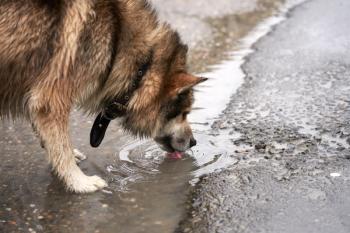
- Firstline May June 2021
- Volume 19
- Issue 03
The medical benefits of urine
Investigators are examining urine to determine the causes and effects of disease.
Among the various bodily fluids, the pale yellow by-product of the urinary system is underrated. However, it has proved to be of considerable importance throughout history. In ancient times, urine was used as a fertilizer, applied in tanneries, and added to smelling salts, medicines, and mouthwash.1,2 In fact, physicians once called it the “divine fluid,” owing to its numerous applications, not the least of which was evaluating the health status of individuals. Urinalysis can provide valuable insights into the pathology of various conditions.
Urine sampling: Why and how?
Urine can reveal the health status of the urinary system, particularly the kidneys. Strict hygienic measures should be maintained when collecting urine samples, and a fresh sample is always preferred. Urine samples can be collected by 3 methods:
- Cystocentesis (preferred and most accurate method)
- Catheterization
- Midstream free flow
Urine samples should be evaluated within 30 minutes. If this is not possible, they may be stored at 4 °C (39 °F) for up to 24 hours. Refrigeration does not significantly alter the pH or specific gravity of urine but may result in the precipitation of crystals.3
Physical characteristics of urine
Color and transparency
The color of normal urine can range from pale yellow to amber, depending on the amount of urochrome present in the sample. Brown-colored urine may suggest hemoglobinuria, and urine that is faint pink in color may indicate congenital porphyria or urolithiasis.4
The transparency of urine in dogs and cats is affected by the presence of epithelial cells, crystals of calcium carbonate, and amorphous urates. However, in horses, cloudy urine may be normal owing to the presence of mucous membrane and epithelial cells. It would be useful to regularly observe or determine the normal color and transparency of a particular patient’s urine to detect any subsequent changes.
Odor and foam
Urine that has a sweet smell may indicate diabetes. In patients with ketonuria, the urine commonly smells of acetone.5
Specific gravity
The solute concentration in urine is determined by its specific gravity. A higher specific gravity indicates more concentrated urine. A lower specific gravity indicates more dilute urine, which may be associated with renal diseases.
Chemical characteristics of urine
pH
Estimation of the pH is useful in determining the efficiency of the kidneys to concentrate hydrogen ions and thus maintain the acid-base balance of the body.
Bilirubin
Bilirubin is a by-product of the normal degradation of red blood cells (RBCs).6 An increase of bilirubin in the urine can indicate liver disease or the abnormal destruction of RBCs. Bilirubinuria (the presence of bilirubin in urine) is sometimes observed in dogs and can be due to a low renal threshold. In addition, canine renal tubular cells are able to catabolize hemoglobin to unconjugated bilirubin and then secrete it into urine.7
Proteins
Proteins in urine can be detected by the dipstick method, which primarily assesses albumin content based on a color change, using indicator dyes such as bromophenol blue. However, bromophenol blue poorly detects globulins such as the Bence Jones protein. The sulfosalicylic acid test is very efficient in detecting albumin and globulins such as the Bence Jones protein, even at low concentrations. However, the most accurate method of diagnosing proteinuria is by determining the protein-creatinine ratio.8
Ketones
Ketone bodies, specifically acetone, acetoacetate, and β-hydroxybutyrate, are by-products of fatty acid metabolism. Study results have shown that the dipstick test can efficiently detect acetoacetate to a great extent and acetone to a lesser extent, but is unable to detect β-hydroxybutyrate.9
Microscopic examination
The presence of urinary sediments, casts, epithelial cells, hormones, and pus can be associated with clinical or subclinical renal disease, urinary tract infections, neoplasm, or pregnancy. Urine crystals, cells, and erythrocytes may disappear or disintegrate if the urine sample is kept for an extended period.
Cancer detection
The diagnosis of neoplastic conditions can be aided by urinalysis. Various cancers of the urogenital system, including the urinary bladder, prostate, and cervix, can be detected in the urine. Even the early stages of pancreatic cancer can be confirmed through urinalysis.
Conclusion
The ancient technique of uroscopy was common practice almost until the 19th century. In more modern times, it has been replaced by more accurate and less time-consuming methods. Although advancements have been made, the pace at which technology in this sphere develops may still be lagging. Advanced techniques, such as the polymerase chain reaction, are now being used to detect a wide variety of bacteria in the urine and can thereby facilitate faster diagnosis of urinary tract infections. For example, tuberculosis can be diagnosed using urine samples.
Urinalysis is safe and simple, and as the only requirement from the patient is a urine sample, discomfort or pain is minimized. Greater emphasis should be placed on producing miniaturized point-of-care urinalysis instruments. These instruments should be designed for convenient use by clinicians, field practitioners, and clients and owners. Clients could perform the test and seek appropriate advice from their veterinarian.
The processes of urinalysis have evolved considerably. Further improvements are anticipated in the near future, with progressive scientific and technological advancements
Jove Jacob is a dvm360 Veterinary Student Ambassador and attends Rajasthan University of Veterinary and Animal Sciences in India.
References
- Loeffler JM. The golden fountain—is urine the miracle drug no one told you about? Pan Afr Med J. 2010;5:13
- Kumar M. From gun powder to teeth whitener: the science behind historic uses of urine. Smithsonian Magazine. August 20, 2013. February 15, 2021. http://www.smithsonianmag.com/science-nature/ from-gunpowder-to-teeth-whitenerthe-science-behind-historic-uses-ofurine-442390/#:~:text=Its%20high%20 pH%20breaks%20down,of%20flesh%20 from%20the%20skin.
- Whitbread TJ. Urinalysis. MSD Veterinary Manual. February 15, 2021. http://www.msdvetmanual. com/clinical-pathology-andprocedures/diagnostic-proceduresfor-the-private-practice-laboratory/ urinalysis
- Toribio RE. Essentials of equine renal and urinary tract physiology. Vet Clin North Am Equine Pract. 2007;23(3):533-561. doi:10.1016/j.cveq.2007.09.006
- Chauhan RS, Chandra D. Veterinary Laboratory Diagnosis. 2nd ed. International Book Distributing Co; 2003:35-47.
- Stockham SL, Scott MA. Fundamentals of Veterinary Clinical Pathology. 2nd ed. Blackwell Publishing; 2008:57-152.
- Chew DJ, Schenck PA. Idiopathic feline hypercalcemia. In: Bonagura JD, Twedt DC, eds. Kirk’s Current Veterinary Therapy XIV. 14th ed. Saunders; 2008:236-241.
- Constantiner M, Sehgal AR, Humbert L, et al. A dipstick protein and specific gravity algorithm accurately predicts pathological proteinuria. Am J Kidney Dis. 2005;45(5):833-841. doi:10.1053/j. ajkd.2005.02.012
- Bhikane AU, Kawitkar SB. Handbook for Veterinary Clinicians. 3rd ed. Krishna Publication; 2010:295-298.
Articles in this issue
over 4 years ago
Empowered women empowering othersover 4 years ago
So much to say, so little timeover 4 years ago
Amplifying the voice of veterinary technicians everywhereover 4 years ago
Why and how to educate your clients about One Healthover 4 years ago
Burning the candle at both endsover 4 years ago
6 ways to save time with Fear Freealmost 5 years ago
Pediatric and geriatric anesthesia considerationsalmost 5 years ago
How to kick toxic practice cultures to the curbNewsletter
From exam room tips to practice management insights, get trusted veterinary news delivered straight to your inbox—subscribe to dvm360.




